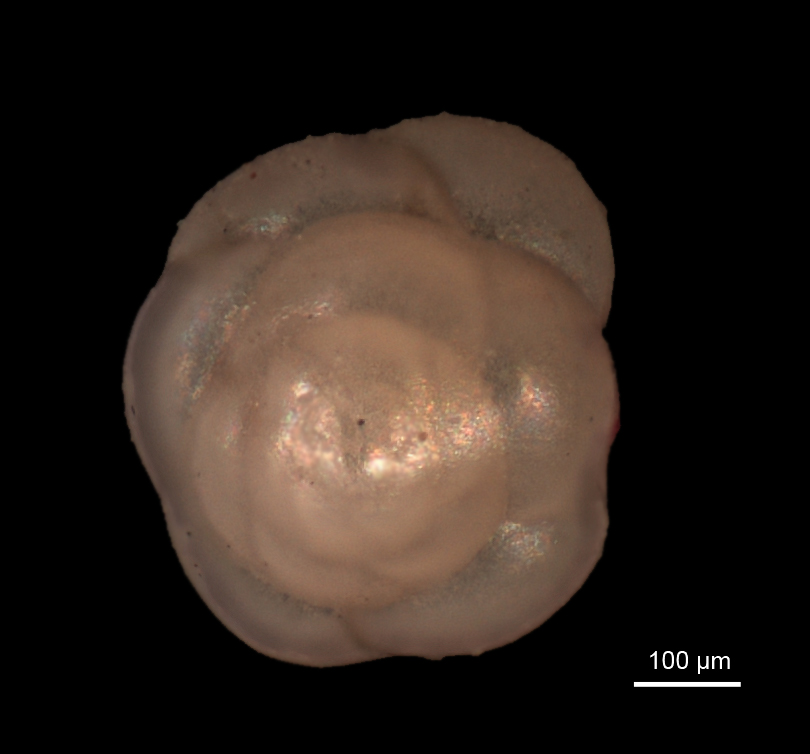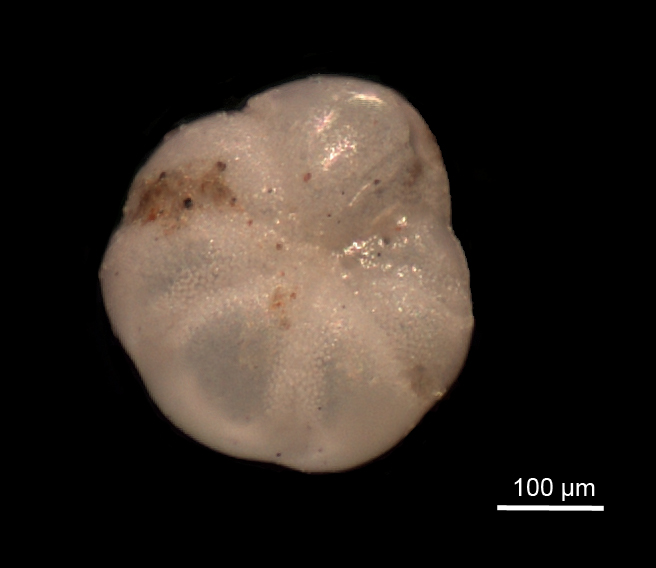Genus – Buccella
Genus Buccella Anderson, 1952
Buccella frigida (Cushman, 1922), emend Anderson, 1952
Eponides frigidus (Cushman, 1922) Bandy, 1940, pl. 22, figs. 5a–c; Cushman and Todd, 1947, p. 21, pl. 3, fig. 20; Cushman, 1948, p. 71, pl. 8, fig. 7; Bandy, 1953, p. 171, pl. 23, figs. 5a–c.
Pulvinulina frigida Cushman, 1921; Todd and Low, 1961, p. 18, pl. 1, figs. 24, 25.
Buccella frigida (Cushman, 1922), emend Anderson, 1952; Lagoe, 1979, p. 261, pl. 1, figs. 1 ,2; Patterson, Burbridge and Luternauer, 1998, p. 22, pl. 25, figs. 6-8; McGann, 2007, p. 67, pl. 11, figs. F1, F2; Vázquez Riveiros and Patterson, 2008, Figs 13.3a–c.
Emended diagnosis. Test small; trochoid, biconvex. Dorsal side with smooth surface, and with narrow, slightly curved and limbate sutures oriented oblique to the peripheral margin. Ventral side with surface smooth and finely perforate; sutures slightly depressed, curved to radial and filled with opaque pustulose material; chambers slightly inflated; with umbilicus and basal margin of last-forming chamber bearing a thick coat of pustules. Periphery slightly lobate and broadly rounded. The number of chambers in the last-forming whorl range from five to seven, the most common being six. Adult tests have two and one half to three coils.
In well-preserved specimen all apertures are concealed by pustulose material. Weathered specimens as show in tf (text figure) 5, an arched primary aperture at the basal margin of the final chamber about midway between the umbilicus and periphery, and low arched supplementary apertures located in slight depression at the outer margin of the sutures near the periphery.
Remarks: Cushman stated that Buccella frigida is an extremely variable species. The typical form is relatively small and robust with broadly rounded periphery, six to seven chambers in each whorls, and ventral sutures that are slightly curved. This form commonly occurs in samples from Hudson Bay and long the Atlantic coast as far south as Maryland. The Pacific coast forms are generally larger and have straighter sutures but have the same number of chambers and the thick pustulose coating in the umbilicus.
Distribution: Cushman and Todd (1947) noted that this was the most common species in Washington, but most of their stations were in the northernmost part around the San Juan Islands and in the Strait of Juan de Fuca. In this study, B. frigida is the third most common taxon and is found throughout the Sound, with particularly variable morphology in Hood Canal.




